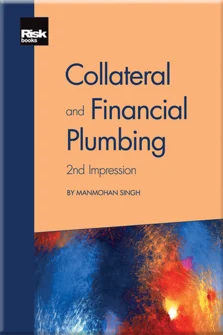Money, Collateral and Safe Assets
Money, Collateral and Safe Assets
Collateral in Financial Plumbing
Collateral Velocity
The Economics of Shadow Banking
Collateral and Monetary Policy
Money, Collateral and Safe Assets
Collateral and the OTC Derivatives Market
The Changing Collateral Space
The Collateral Infrastructures
The Sovereign–Bank Nexus via OTC Derivatives
When Financial Plumbing Breaks Down: An Example from Central Counterparties
Transmission of Monetary Policy Feds Lift-off and Collateral Reuse
Conclusion
Between 1980 and the 2008 financial crisis, the use of collateral in financial markets rose exponentially in the US and in other financial markets. After the crisis, there has been a reduced pool of assets considered acceptable as collateral, resulting in a liquidity shortage. When trying to address this, policymakers will need to consider collateral besides the traditional money metrics.
Introduction
In the traditional view of a banking system, credit and money are largely counterparts to each other on different sides of the balance sheet. In the process of maturity transformation, banks are able to create liquid claims on themselves, namely money, which is the counterpart to less liquid loans or credit. Banks create money-like assets (not money). Owing to the law of large numbers, banks have for centuries been able to safely conduct this business with relatively little in the way of liquid reserves, as long as basic confidence in the soundness of the bank portfolio is maintained.
In recent decades, with the advent of securitisation and electronic means of trading and settlement, it became possible to greatly expand the scope of assets that could be transformed directly
Copyright Infopro Digital Limited. All rights reserved.
As outlined in our terms and conditions, https://www.infopro-digital.com/terms-and-conditions/subscriptions/ (point 2.4), printing is limited to a single copy.
If you would like to purchase additional rights please email info@risk.net
Copyright Infopro Digital Limited. All rights reserved.
You may share this content using our article tools. As outlined in our terms and conditions, https://www.infopro-digital.com/terms-and-conditions/subscriptions/ (clause 2.4), an Authorised User may only make one copy of the materials for their own personal use. You must also comply with the restrictions in clause 2.5.
If you would like to purchase additional rights please email info@risk.net











